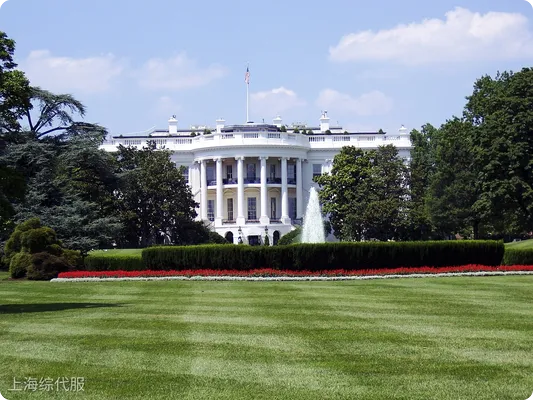On January 20, local time, Trump, who had just taken office as the US President, signed a series of executive orders in the Oval Office of the White House.It was announced that a 25% tariff will be imposed on goods imported from Canada and Mexico starting February 1. In addition, Trump also announced that a 10% tariff will be imposed on all goods imported from China.

The Deeper Background of the “Tariff Stick”
Political considerations
By imposing tariffs on Canadian and Mexican goods, the United States can demonstrate its determination to protect domestic manufacturing in the United States and show voters that it is fulfilling its promise of "America First" to win more support. The promotion of relevant interest groups also played a key role. Some domestic industries in the United States, such as steel and automobile manufacturing, have long faced competitive pressure from low-priced products from Canada and Mexico. These interest groups have continuously put pressure on the government to take measures to protect domestic industries. Trump's tariff policy is undoubtedly a response to their demands.
Economic difficulties
The US domestic economy is currently facing many problems. The trade deficit has remained high for a long time, becoming a major pain point for the US economic development. Trump believes that by imposing high tariffs on Canadian and Mexican goods, imports can be effectively reduced and the trade deficit can be reduced. In addition, there is also an imbalance in the domestic industrial structure of the United States, with the proportion of manufacturing gradually declining and a large number of jobs lost. Trump hopes to use tariffs to force companies to move their production lines back to the United States, promote the return of manufacturing, promote employment, and reshape the US economic structure.
Border Control
Trump used the tariffs as a means to strengthen border control, citing border security as an excuse. The U.S.-Mexico border is 3,145 kilometers long, and the problems of illegal immigration and drug smuggling have always plagued the United States. Trump claimed that Canada and Mexico have not done enough to curb the influx of illegal immigrants and drugs, and the tariffs are intended to force the two countries to strengthen border management and jointly deal with these problems. He believes that exerting pressure through economic means can prompt the two countries to invest more resources in border control, thereby reducing the harm of illegal immigration and drugs to American society.

What is the impact of increased tariffs?
A severe blow to North American economic integration
Since the North American Free Trade Agreement (NAFTA) came into effect in 1994, it has greatly promoted trade liberalization and economic integration among the United States, Canada and Mexico. A close industrial chain and supply chain have been formed between the three countries, with a high degree of interdependence. However, Trump's tariff policy has severely impacted NAFTA and its replacement agreement, the United States-Mexico-Canada Agreement (USMCA), significantly increasing trade costs and making it difficult for companies to trade among the three countries, which has seriously undermined the trade order established by the agreement. Trust between the United States, Canada and Mexico has been severely hit, and trade disputes between the three countries have continued to escalate. Canada and Mexico have expressed strong dissatisfaction with the US tariff policy and have taken countermeasures to increase tariffs on US goods, which has put the trade relations between the three countries into a tense confrontation and seriously affected the stable development of the economies of the three countries.
The "cold winter" of related industries is coming
The automotive industry is the first to be affected. American automakers have long relied on cheap parts imported from Mexico to reduce production costs. According to statistics, about 50% of American auto parts imports come from Mexico. After the tariff increase, the import cost of these parts will increase significantly, and the production cost of automakers will rise accordingly. In order to maintain profits, manufacturers may have to increase the price of cars, which will weaken the competitiveness of American cars in the international market.
The energy industry will also be impacted, as about 50% of the U.S.'s oil imports come from Canada. The increase in tariffs has significantly increased the cost of imported oil in the United States, which will not only lead to an increase in domestic oil prices in the United States, but will also have a chain reaction on related industries that rely on oil, such as transportation, chemicals, etc., increasing the production costs of these industries and reducing production efficiency. The agricultural product industry will also be affected. Canada's high-quality agricultural products, such as wheat and meat, and Mexico's specialty agricultural products, such as avocados, will see their prices rise sharply after the tariffs are raised. The cost of purchasing these agricultural products for American consumers will increase, and demand may therefore decline, which will in turn affect agricultural production in Canada and Mexico.
A stumbling block to global economic recovery
The trade frictions caused by tariffs have seriously affected global economic growth expectations. The International Monetary Fund (IMF) has repeatedly warned that trade frictions will lead to a slowdown in global economic growth. Since the United States, Canada and Mexico are important economies in the world, the trade frictions between the three countries will be transmitted to other countries and regions through trade channels and industrial chains, making global economic growth face greater uncertainty.

Strong response: Canada and Mexico's "countermeasures"
Canada’s “retaliation list”
According to previous news, in the face of the US tariff threat, Canada has drawn up a retaliatory tariff list of US goods worth 150 billion Canadian dollars (about 105 billion US dollars). This list covers many categories, involving automobiles, consumer goods, chemicals, machinery and metal products, accounting for nearly one-third of the total value of Canada's imports from the United States. Once the US tariff policy is officially implemented, Canada will immediately impose tariffs on the products on the list, and may further increase tariffs based on subsequent US actions. Canadian Foreign Minister Joly said that any countermeasures, including the possible cutting off of energy exports to the United States, are not ruled out.
Mexico's "firm response"
Mexico responded long before Trump said he would impose a 25% tariff on Mexican goods. The Mexican president said he would firmly defend his country's interests and would not sit idly by and watch the US tariff measures damage the Mexican economy. Mexico plans to impose retaliatory tariffs on some US agricultural products, steel and aluminum products to offset the impact of US tariffs on its own industries. At the same time, Mexico is actively seeking to strengthen trade cooperation with other countries, expand international markets, and reduce its dependence on the US market. In addition, Mexico is also actively active at the diplomatic level, coordinating positions with affected countries such as Canada, and jointly expressing concerns to the United States, trying to urge the United States to reconsider its tariff policy through multilateral channels and safeguard its position and interests in international trade.


 Follow customer service WeChat
Follow customer service WeChat